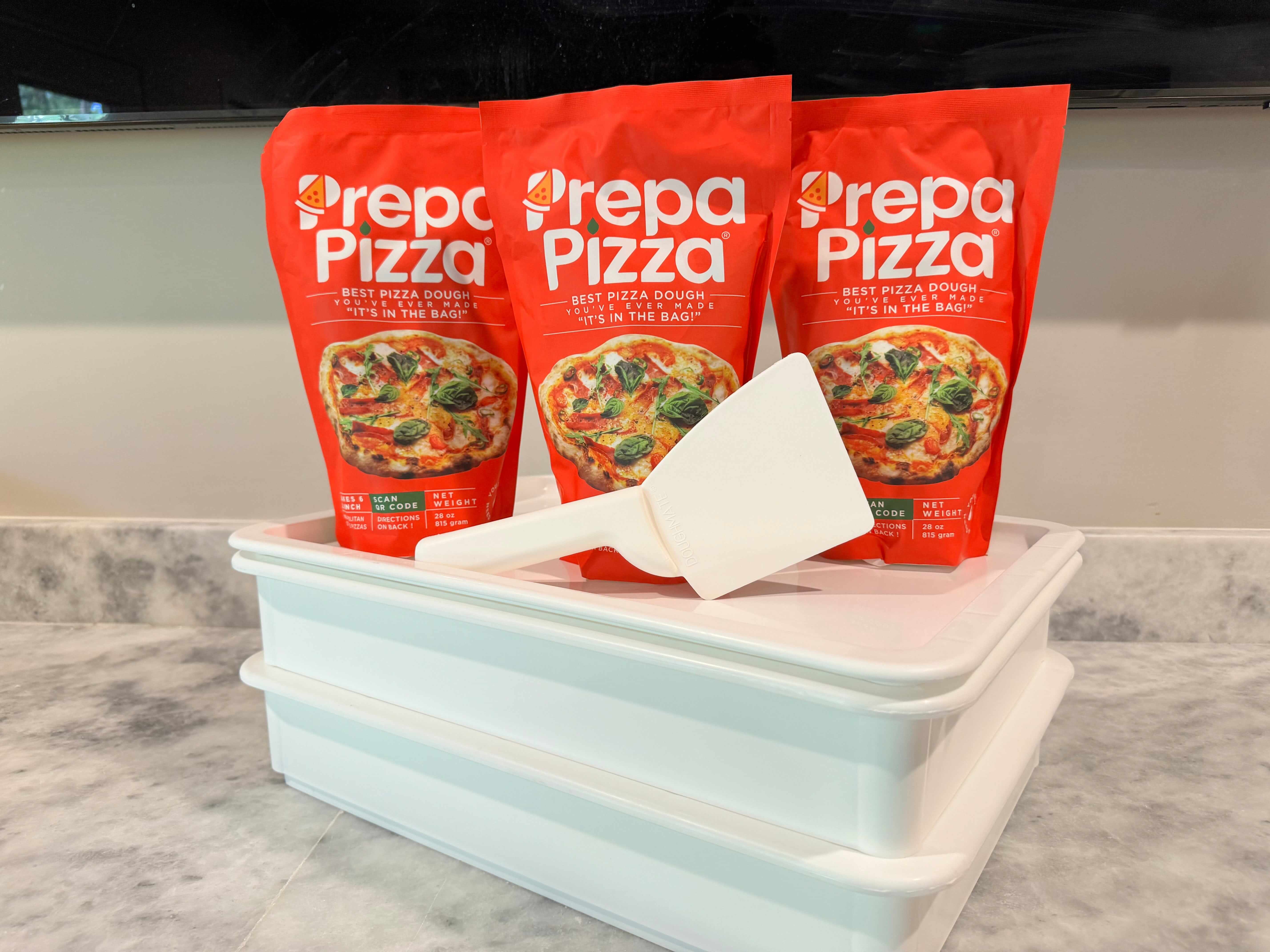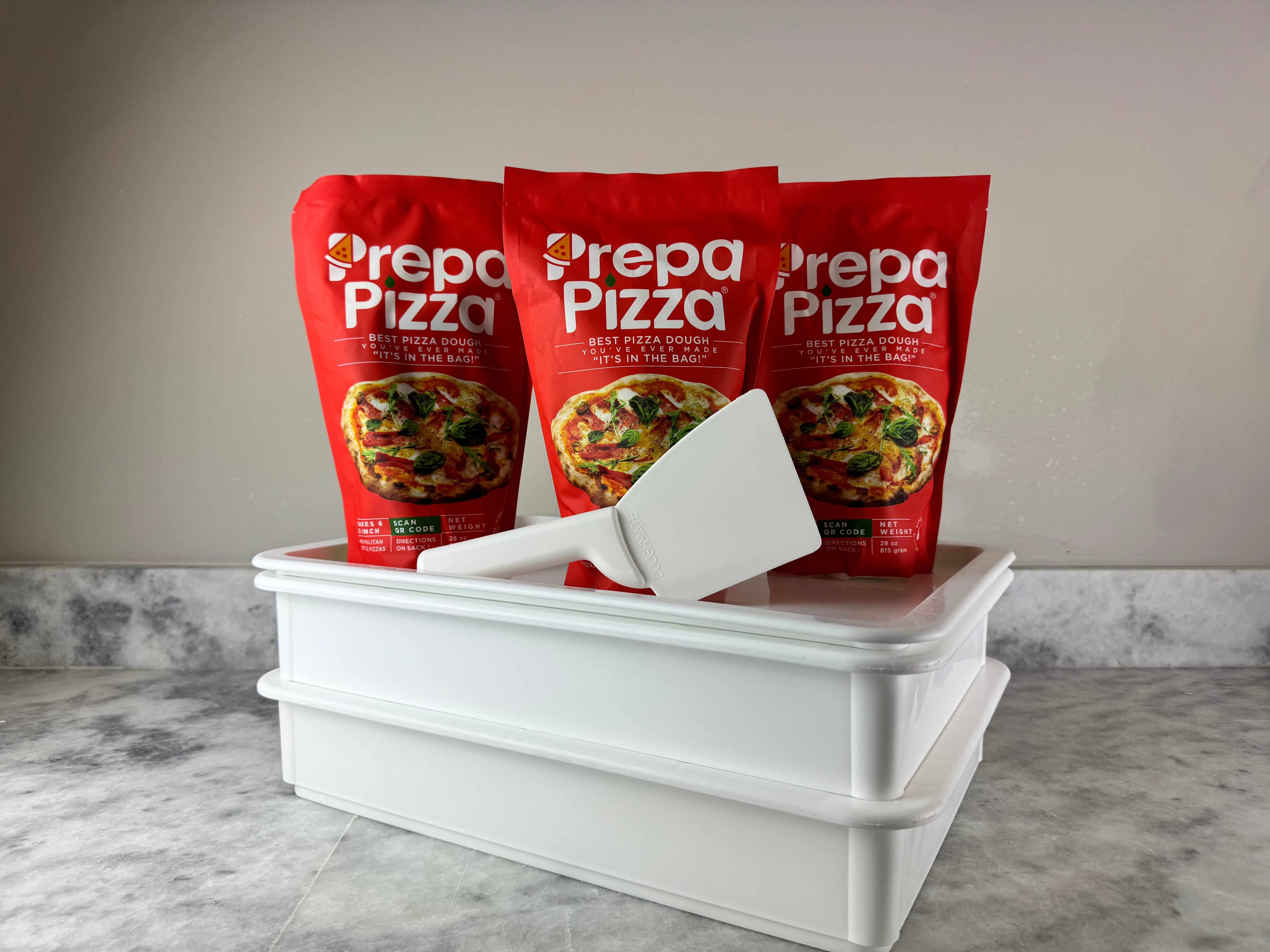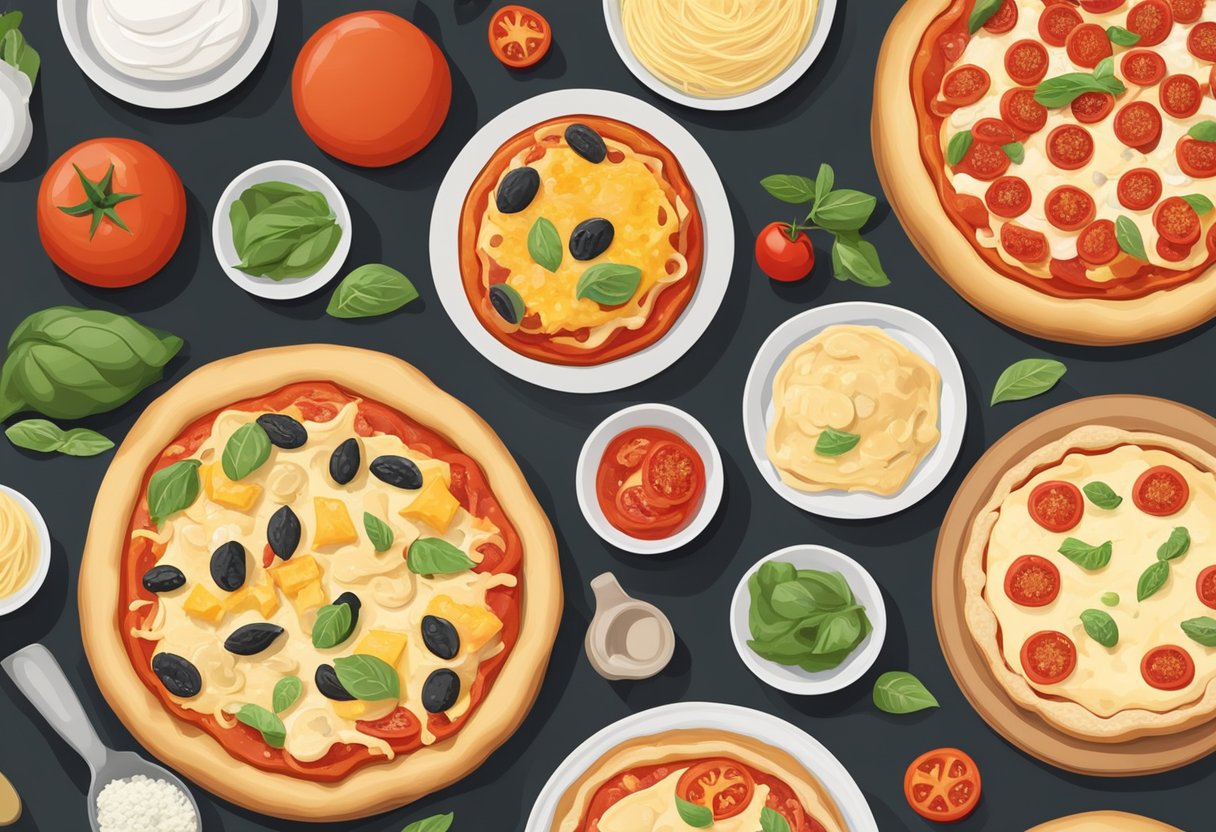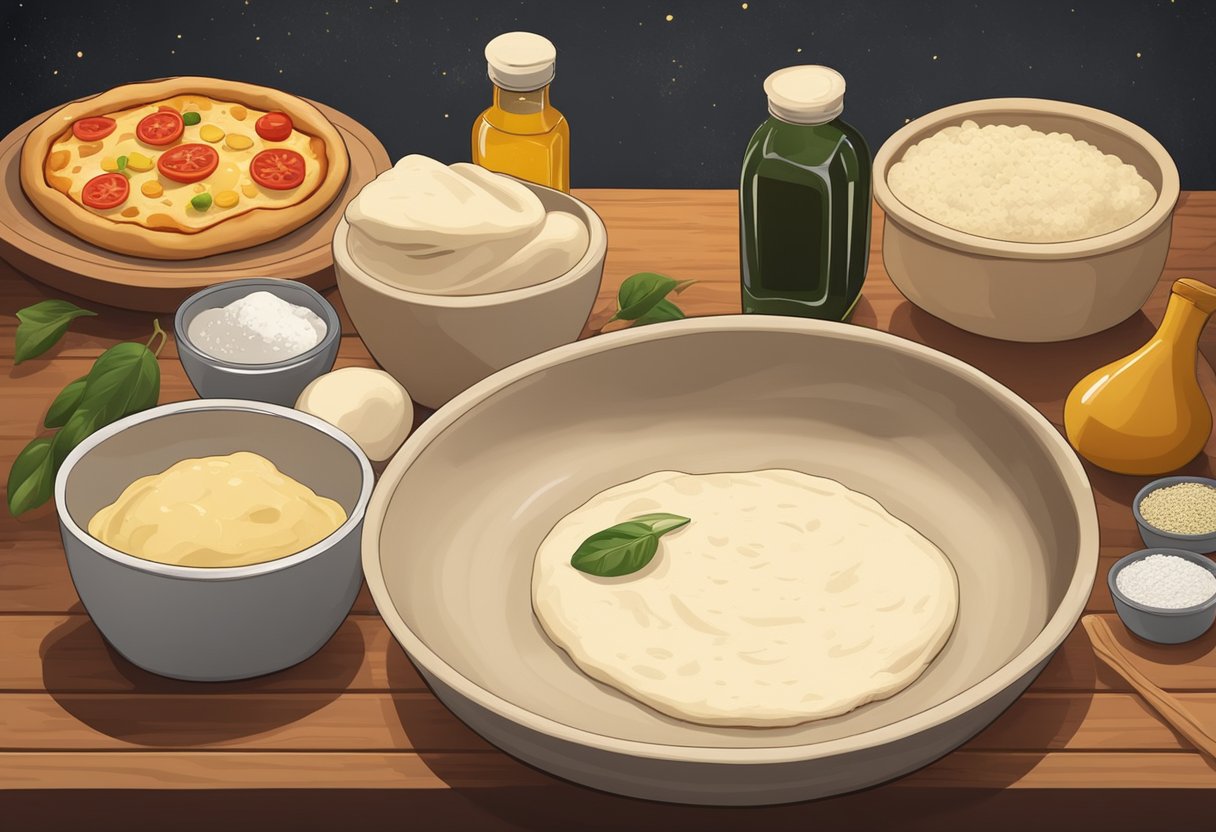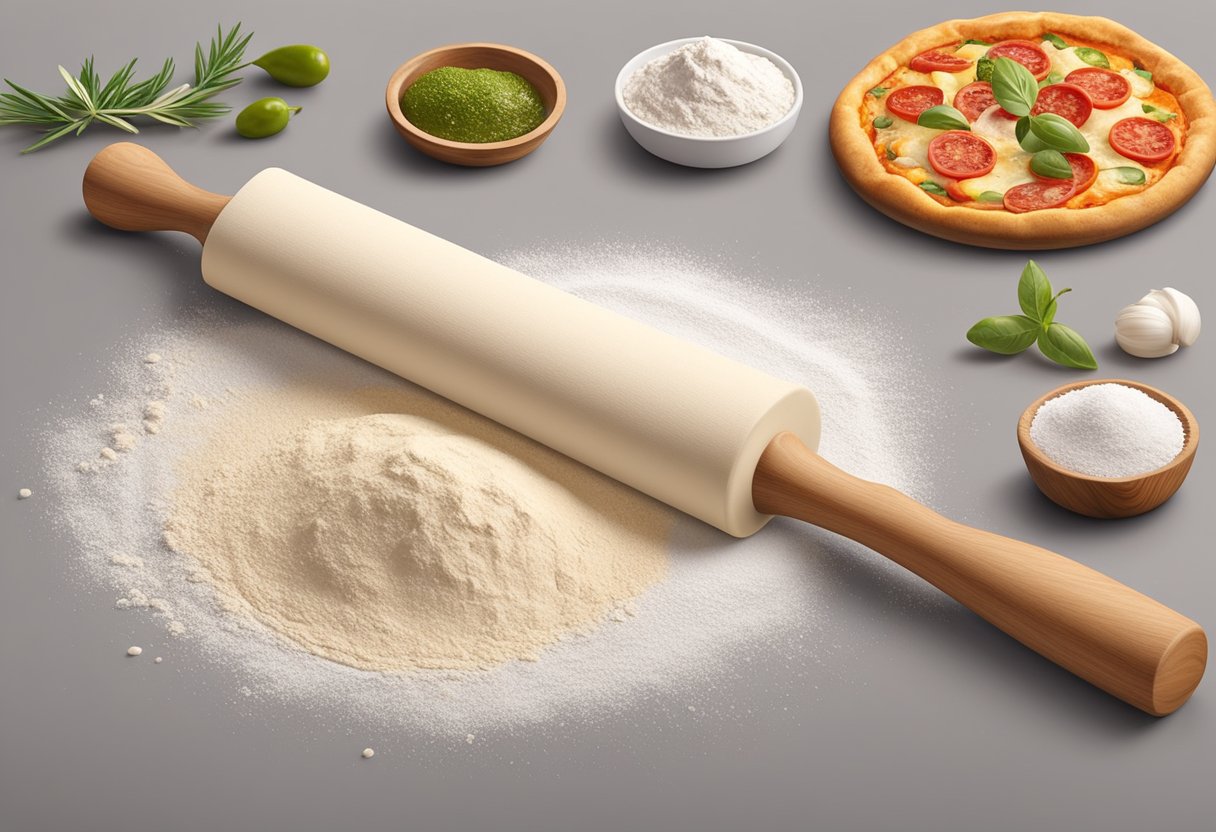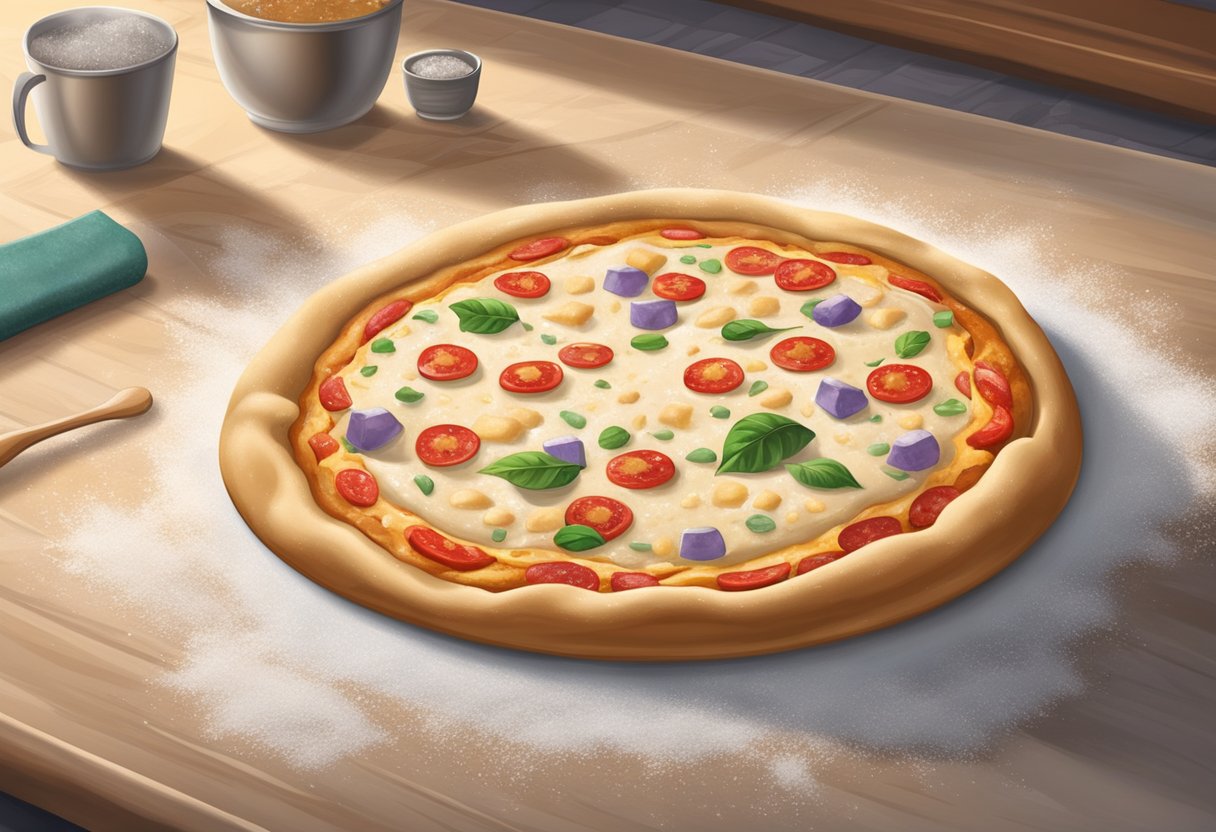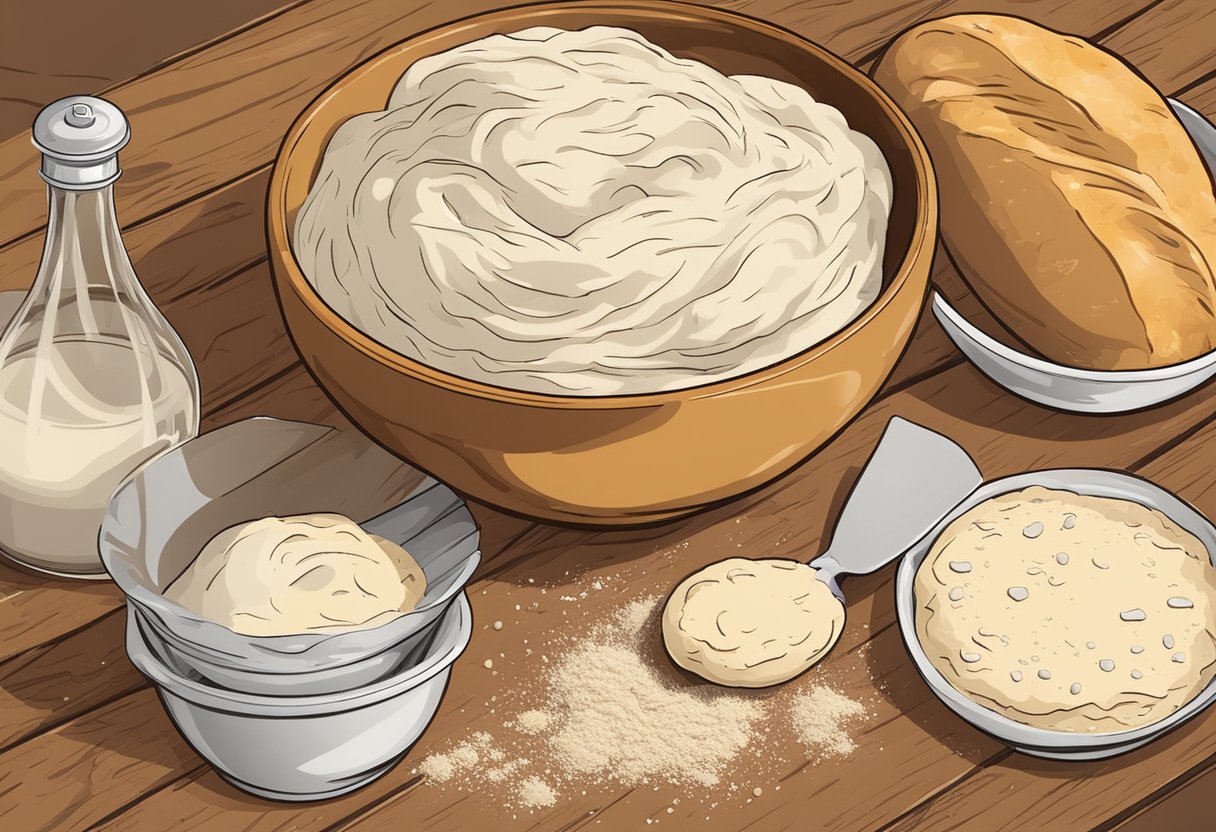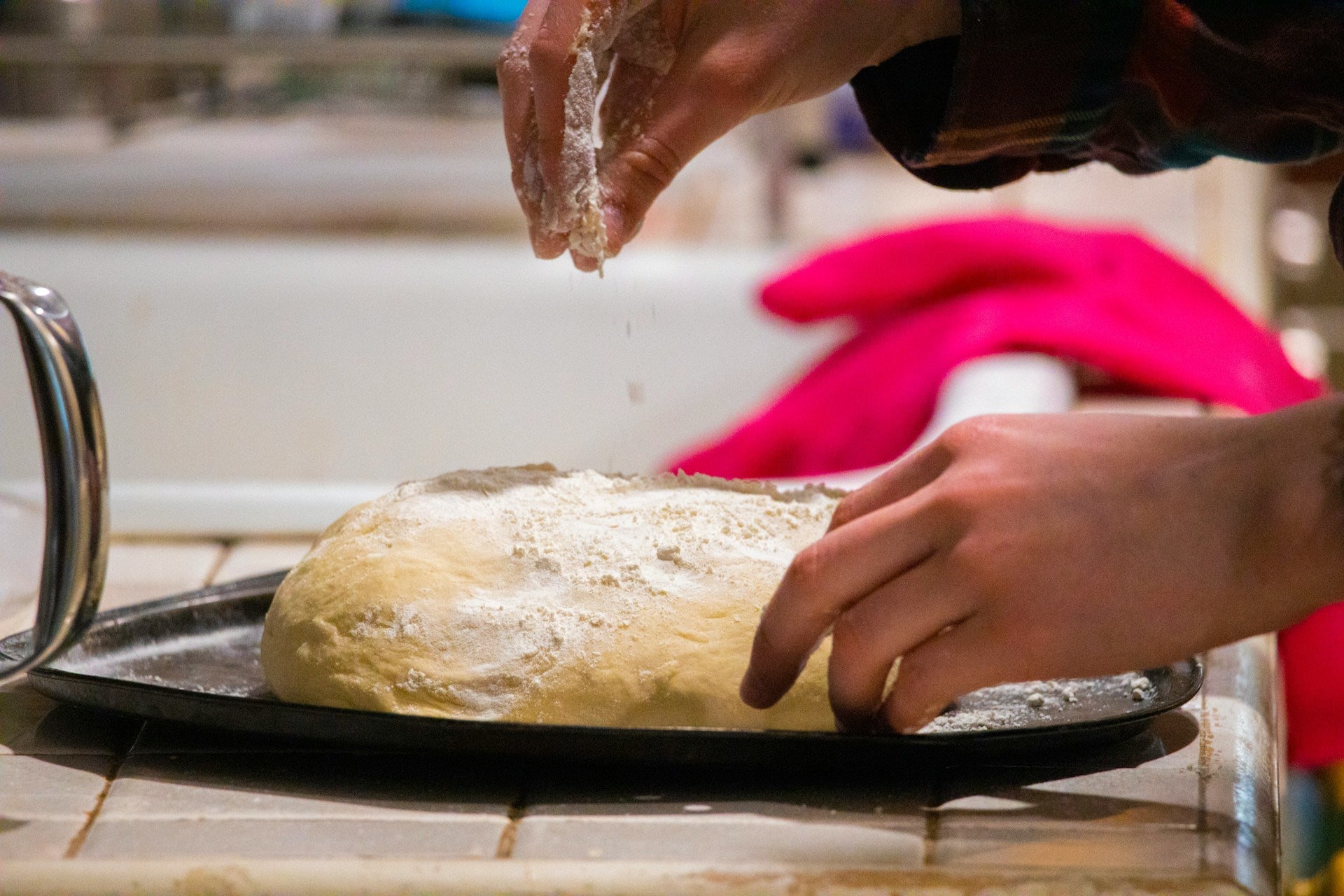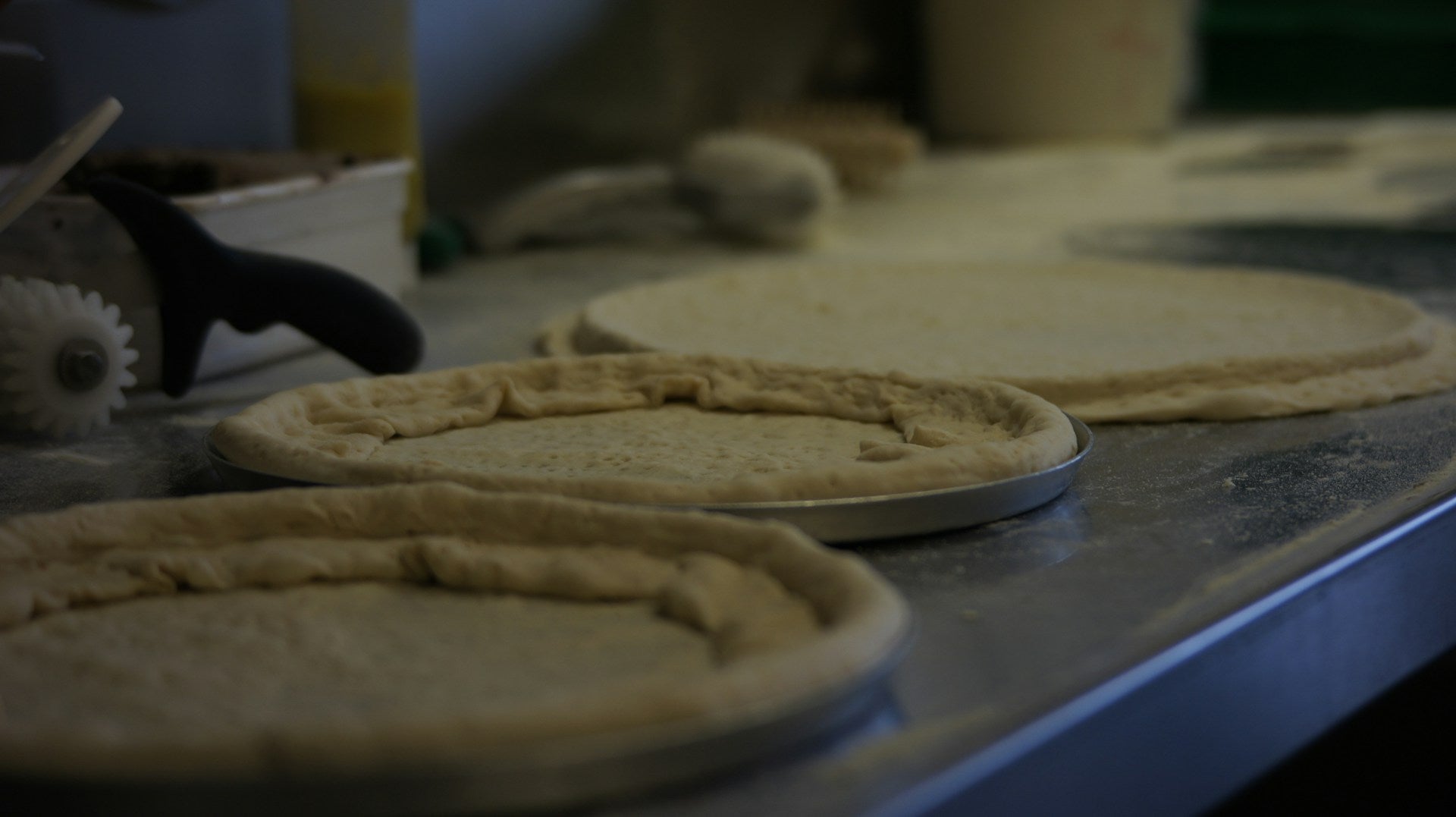
What is Proofing Pizza Dough: Understanding the Essential Rising Process
When making pizza, understanding the proofing process is essential for achieving the perfect crust. Proofing is the stage where your pizza dough rises, allowing the yeast to ferment, which enhances both flavor and texture. This step is crucial because it creates those desirable air bubbles that make your pizza light and crispy.
As you work with your dough, remember that proofing involves two key phases: bulk fermentation followed by shaping and individual ball proofing. This not only allows the dough to develop its unique characteristics, but it also sets the stage for a delicious finished product. Using high-quality dough, like that from Prepa Pizza, ensures your proofing process starts on the right foot, leading to exceptional results.
With the right approach to proofing, you can elevate your homemade pizzas to restaurant-quality. Understanding this crucial technique can transform your pizza-making experience, giving you confidence in every bite.
Understanding Proofing in Pizza Dough
Proofing is a crucial step in the pizza-making process that enhances the dough's texture and flavor. During this stage, the dough undergoes a transformation, thanks to the activity of yeast and the fermentation process. You will gain insights into what proofing involves, the role yeast plays, and how fermentation contributes to dough rise.
What Is Proofing
Proofing refers to the period when pizza dough is allowed to rise after being shaped into balls. This process typically follows bulk fermentation, where the dough has initially risen as a single mass. During proofing, the dough expands, creating a lighter and airier texture. You should allow the dough to rest in a warm environment to optimize yeast activity.
The duration of proofing can vary but usually ranges from 30 minutes to a few hours, depending on factors like temperature and the specific yeast used. Proper proofing is essential for achieving that desirable crust structure in your finished pizza.
The Role of Yeast in Dough Rise
Yeast is a living organism responsible for leavening your pizza dough. As it ferments sugars within the dough, it produces carbon dioxide and alcohol. This fermentation process creates tiny bubbles in the dough, contributing to its rise and resulting in a light, airy texture.
With Prepa Pizza dough, you benefit from high-quality yeast that ensures consistent results. The right yeast not only enhances the flavor but also aids in developing the dough's structure, making it easier to shape and bake to perfection.
Fermentation Process Explained
Fermentation in pizza dough consists of two phases: bulk fermentation and proofing. During bulk fermentation, the dough rests to develop flavor and strength. This initial phase can last several hours, depending on the recipe and temperature.
Once the dough is divided into smaller portions and shaped into balls, the proofing phase begins. Here, the dough continues to rise, allowing yeast to further develop those essential flavors and textures. Understanding this process helps ensure your pizza crust will be both tasty and appealing.
Science Behind Pizza Dough Proofing
Understanding the science of pizza dough proofing enhances your pizza-making skills. This process is vital for achieving the desired texture and flavor in your pizza. It incorporates various factors, such as the role of carbon dioxide, the differences between fermentation and proofing, and the impact of sugar and warm water.
How Carbon Dioxide Impacts Texture
During proofing, yeast ferments the sugars present in the dough, producing carbon dioxide. This gas is essential as it creates small air pockets within the dough, leading to a light and airy structure.
The accumulation of carbon dioxide causes the dough to expand, which significantly improves its texture. A well-proofed dough will have a chewy and elastic quality, important for holding toppings. Inadequate proofing may result in a dense crust that lacks the desired lift.
Using high-quality dough from Prepa Pizza ensures consistent fermentation and proper rise, contributing to an excellent texture in your final product.
Difference Between Fermentation and Proofing
Fermentation and proofing are often confused but serve different purposes in dough preparation. Fermentation occurs when yeast converts sugars into alcohol and carbon dioxide, a process that can take several hours.
Proofing, on the other hand, is the final rise before baking. This stage is crucial as it allows the shaped dough to expand further, enhancing its flavor and texture. Understanding these differences helps you manage your dough effectively, ensuring optimal results when using pre-made dough from Prepa Pizza.
Sugar and Warm Water in Dough Activation
Sugar is a vital ingredient in dough as it serves as food for yeast during the fermentation process. When dissolved in warm water, sugar activates the yeast, kickstarting fermentation and proofing.
Warm water, typically between 100°F to 110°F, further supports this activation. It encourages yeast growth, allowing for quicker and more efficient proofing.
Incorporating these elements correctly ensures that your dough rises effectively. Using high-quality dough from Prepa Pizza can further simplify this process, giving you a reliable base for your pizza.
Methods and Equipment for Dough Proofing
Understanding how to proof pizza dough effectively is essential for achieving the desired texture and flavor. Various methods can be employed, along with specific equipment that can enhance the proofing process.
Room Temperature Versus Refrigerated Proofing
When proofing your dough, you have the option of using room temperature or refrigerated methods. Room temperature proofing is typically quicker, taking anywhere from 1 to 4 hours. This method allows for a faster rise, which can develop more complex flavors.
In contrast, refrigerated proofing takes longer, often from 24 to 72 hours. This slow process results in a more nuanced flavor profile and a better texture. The cool environment slows down yeast activity, allowing fermentation to enhance the dough's taste.
Dough Balls and Their Handling
Proper handling of dough balls is critical to successful proofing. After dividing your dough into balls, ensure each ball is tightly shaped to maintain its structure during proofing. This is where Prepa Pizza's quality premade dough excels.
Once formed, place the dough balls in a lightly greased container to prevent sticking. Cover them with a damp cloth or plastic wrap to maintain moisture. This helps achieve a consistent environment around each dough ball, promoting even expansion.
Using Proofing Boxes and Dough Pans
Proofing boxes are designed to create a controlled environment for your dough. They maintain optimal humidity and temperature, which can significantly enhance your proofing process. These boxes can accommodate multiple dough balls, keeping them in ideal conditions.
Dough pans also serve a similar purpose. They can hold your dough balls while allowing for adequate airflow, essential for proper fermentation. Utilize Prepa Pizza’s dough pans to ensure your dough remains in top condition throughout the proofing phase. The right equipment plays a key role in maximizing the quality of your dough.
Choosing the Right Materials for Proofing
Selecting appropriate materials for proofing pizza dough is crucial for achieving optimal fermentation and texture. The right containers not only help create a conducive environment for your dough but also simplify the cleanup process.
Polycarbonate, Polypropylene, and ABS Plastic
Containers made of polycarbonate, polypropylene, and ABS plastic are popular choices for proofing dough. These materials are lightweight yet durable, making them ideal for handling and storage.
Polycarbonate offers high clarity and strong resistance to impact. It withstands temperature fluctuations well, ensuring your dough stays at the right temperature during proofing.
Polypropylene is another resilient option, known for its chemical resistance and flexibility at varying temperatures. It's also microwave-safe, allowing you to manage temperature changes effectively.
ABS plastic is exceptionally tough and rigid. It is less transparent than polycarbonate, but its durability makes it a reliable choice for long-term use. These plastics are usually easy to clean and maintain.
Fiberglass, Aluminum, and Teflon® Co-Polymer
When considering fiberglass, aluminum, and Teflon® co-polymer, you have options that excel in different aspects of proofing.
Fiberglass is non-reactive and maintains stable temperatures. Its excellent insulation properties help create an ideal environment for dough fermentation. This material can often be found in specialized proofing boxes.
Aluminum offers a lightweight solution that heats up quickly, making it suitable for dough that requires prompt proofing. Many aluminum containers come with a non-stick coating to facilitate easy dough handling.
Teflon® co-polymer is noted for its superior non-stick capabilities. Using this material reduces the risk of dough sticking, ensuring a smoother transfer from the proofing container to the oven.
Easy to Clean Options
Maintenance is key when selecting proofing materials. Containers that are easy to clean help streamline your dough preparation process.
Plastic and fiberglass options often feature smooth surfaces that resist staining. A simple rinse or wipe is usually sufficient to keep them clean.
Non-stick surfaces, like those found in aluminum and Teflon® products, reduce residues left behind, making cleanup even easier.
Consider using dishwasher-safe materials if you prefer full machine cleaning to ensure sanitary conditions for your dough. Ease of maintenance enhances your overall dough preparation consistency.
Pizza Dough Proofing Best Practices
Effective proofing can greatly enhance the flavor and texture of your pizza dough. Understanding your ingredients and following specific recipes will help you achieve the best results.
Bread Flour, Olive Oil, and Other Key Ingredients
Using high-protein bread flour is essential for creating a structure that can hold the air from fermentation. This type of flour contributes to the gluten development, which is crucial for a chewy crust.
Incorporating a small amount of olive oil can also improve the dough's extensibility. It enhances flavor and helps create a tender crumb. Choose high-quality ingredients from providers like Prepa Pizza for the best combinations.
Remember to consider water temperature as well. Using lukewarm water (about 100°F) helps activate the yeast without damaging it.
Recommended Pizza Recipes for Perfect Proofing
To perfect your proofing technique, specific pizza recipes can guide you. Start with a basic dough recipe that includes:
- 4 cups of bread flour
- 1.5 cups of water
- 2 teaspoons of salt
- 1 teaspoon of sugar (to feed the yeast)
- 1 packet of active dry yeast
Mix the ingredients and allow the dough to rest for at least 24 hours. For optimal results, a 48-hour proof is recommended. This longer duration allows for deeper flavor development and better texture.
Experimenting with different pizza styles—like Neapolitan or New York-style—can further refine your approach to proofing. Each style may require slight adjustments in proofing time and techniques.
Troubleshooting Common Proofing Issues
You may encounter some challenges during the proofing process. A common issue is dough not rising adequately. Ensure your yeast is fresh and that you're using the right temperature of water.
If your dough is too sticky, adjust the flour-water ratio slightly. A sticky dough can hinder proper shaping and fermentation. Conversely, if the dough feels too dry, a little extra water can help achieve the right consistency.
Pay attention to the environment as well. If your kitchen is too cold, consider placing your dough in a warm oven (with the light on) to encourage rising. Always monitor the dough closely during the proofing stages for best results.
Specialty Tools: Spotlight on Cambro and Pizza Dough Boxes
Using the right tools is crucial when it comes to proofing pizza dough effectively. Cambro offers reliable and specialized dough boxes that enhance the proofing process, ensuring your pizza dough rises perfectly. Here is a closer look at their features and benefits.
Features of a Cambro Dough Proofing Box
Cambro dough proofing boxes are designed with functionality in mind. They are made from lightweight, durable polypropylene, making them easy to handle. Key features include:
- Ventilation: Some models come with ventilated lids that allow for proper airflow, which is vital for even dough rising.
- Stackability: They nest together tightly, saving space in your kitchen while keeping your dough protected from contaminants.
- Clear Design: The transparent material lets you monitor your dough's progress without opening the box.
These features make Cambro dough boxes a practical choice for any pizzeria or home cook focused on quality.
Benefits of a Dedicated Pizza Dough Box
Investing in a dedicated pizza dough box offers multiple advantages for proofing dough. A Cambro pizza dough box helps maintain consistent humidity and temperature, crucial for optimal dough development. You can benefit from:
- Even Rising: The controlled environment allows your dough to rise evenly, improving the final texture of your pizza crust.
- Reduced Contamination: Storing dough in a sealed box reduces exposure to dust and other kitchen contaminants, ensuring food safety.
- Efficient Organization: With a dedicated box, you can streamline your workflow. You can store multiple dough portions with ease, keeping your workspace organized.
By using a dedicated Cambro pizza dough box, you can enhance the quality of your pizza when using premade dough from Prepa Pizza, ensuring a consistently great product every time.
Frequently Asked Questions
Understanding proofing can enhance your pizza-making skills. Key factors include ideal proofing times, methods, temperatures, and the potential for over-proofing. Here are answers to common questions regarding proofing pizza dough.
What is the ideal proofing time for pizza dough at room temperature?
For optimal flavor and texture, pizza dough should proof for a minimum of 24 hours at room temperature. A 48-hour proof is recommended for richness, while a 72-hour proof can produce the best results, allowing for maximum yeast fermentation.
How can you proof pizza dough in the refrigerator and for how long?
To proof dough in the refrigerator, place it in a covered container to prevent drying out. This method allows for slow fermentation and enhances flavor. You can refrigerate the dough for 24 to 72 hours, depending on your desired taste and texture.
What are effective methods to speed up the proofing process of pizza dough?
To expedite proofing, you can place the dough in a warm area, ideally around 75°F to 85°F. Another method is to use a proofing box or a warm oven (turned off), which can help maintain an ideal temperature. Adding a little extra yeast can also quicken the process.
What is the correct temperature for proofing pizza dough in the oven?
If you choose to proof in the oven, maintain the temperature between 80°F and 90°F. This warm environment encourages yeast activity without cooking the dough. Be sure to turn off the oven before placing the dough inside to avoid any heat damage.
How does the temperature of proofing affect the quality of pizza dough?
Temperature impacts the yeast's fermentation rate, which in turn affects flavor and texture. Warmer temperatures can accelerate yeast activity, but excessive heat may lead to a compromised dough structure. Maintaining a balance is key to achieving high-quality pizza dough.
Can you over-proof pizza dough, and what are the signs?
Yes, it is possible to over-proof pizza dough, which can compromise its structure. Signs of over-proofing include a dough that has become overly airy, deflates easily, and lacks elasticity when shaped. It may also have a sour odor, indicating excessive fermentation.





